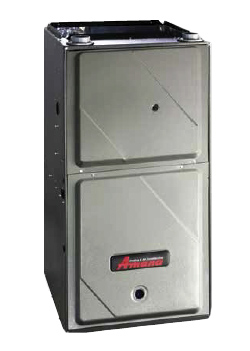The purpose of this article is to provide an overview on the types of gas furnaces available on the market today. You will not become an overnight expert on gas furnaces, but you will be much more knowledgeable and better prepared when either building a new home or replacing an existing furnace.
That day may come when you need to invest in a new furnace for your home. So, in terms of priorities, what should you consider in choosing a new furnace. Obviously, comfort is important. You should also consider cost and efficiency as major priorities. In the meantime, make sure you read our article on Furnace Maintenance Tips.
For example, electric furnaces are still very popular with people who want to reduce their carbon footprint. But, while electric furnaces are generally the least expensive to buy and install, they are not necessarily the most energy efficient.
Although both electric and oil furnaces are still popular, forced air furnaces that burn propane or natural gas, are generally the most efficient and economical method of heating.
Energy Efficiency is measured according to how efficiently each unit produces heat. This measurement is known as the Annual Fuel Utilization Efficiency or AFUE. AFUE is determined by comparing the amount of fuel consumed to the amount of heat created. For example, an AFUE of 80% means that 80 cents of each dollar is being converted into effective heat, while 20 cents is essentially wasted. For more information see Guide to Furnaces.
5 Types of Gas Furnaces:
These gas furnaces are ranked according to efficiency, comfort, heat distribution and quietness.
1. Modulating Variable Speed Gas Furnace
Modulating Variable Speed Furnaces are the very best furnace available in terms of operating efficiency, comfort, heat distribution, and quietness. According to Washington Energy, The National Association of Homebuilders likens a standard furnace to stop and go traffic, with its inefficient use of energy for your car. Modulating furnace performance is more like highway driving, where you are cruising along, making slight operating adjustments while achieving maximum efficiency. The modulating furnace operates with more finesse to reduce temperature fluctuations, providing consistent indoor temperature, quiet operation, and an annual fuel utilization efficiency (AFUE) up to 98%. That means fuel is used more efficiently, reducing your energy consumption and cost.
2. Three-Stage Variable Speed Gas Furnace
Three stage furnaces use a variable or three speed variable blower to increase efficiency and reduce fuel consumption. On days where it’s not as cold outside, your blower will operate at a slow speed. Then, on colder days, it will automatically switch to a higher speed. Once the desired comfort is reached, the blower will gradually slow down to the lower speed levels.
3. Two-Stage Variable Speed Furnace
Two-stage variable speed furnaces, like the three-stage variable speed gas furnace, can provide additional comfort in your home and reduce energy consumption. Two-Stage Variable Speed Furnaces are much quieter than Single Stage or Two Stage Furnaces. When additional equipment is added to a furnace, a Two-Stage Variable Speed Furnace is a good choice for two and three story homes.
4. Two-Stage Furnace
Two-Stage Furnaces have two fan speeds, provide a more uniform heat distribution, and are generally a bit quieter than Single Stage Furnaces.
5. Single-Stage Furnace
Single-Stage Furnaces only have one fan speed. While these are the most common furnaces, they are generally the least energy efficient and loudest on terms of operation.
For more information on Single-Stage versus Two-Stage gas furnaces, watch this short 3-minute tutorial produced by Alpine Home Air Products.
Contact us today for more information!



